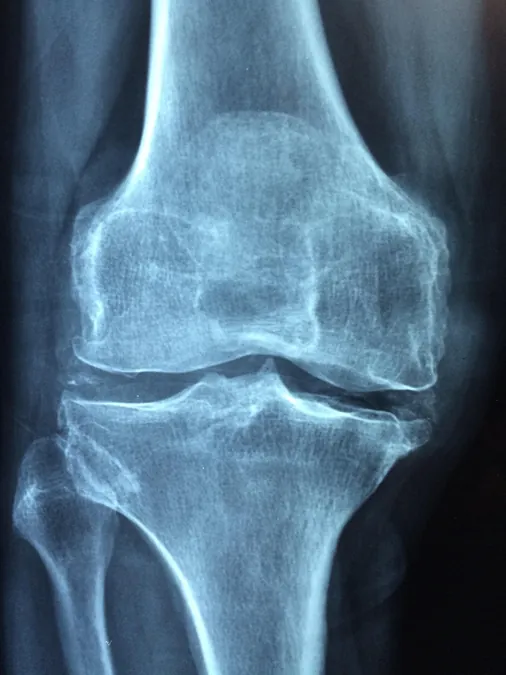
Groundbreaking Consensus Reveals Vital Role of Bone Turnover Markers in Osteoporosis: Are You at Risk?
2025-03-31
Author: Yu
A recent consensus paper has emerged, shedding new light on the significance of bone turnover markers (BTMs) in the diagnosis and management of osteoporosis, a silent and often underestimated ailment affecting millions worldwide. The paper, titled "Update on the Role of Bone Turnover Markers in the Diagnosis and Management of Osteoporosis," was featured in the prestigious journal, Osteoporosis International.
This comprehensive review re-evaluates the clinical importance of BTMs, particularly emphasizing their role in predicting fracture risk and monitoring treatment efficacy over the past decade. The consensus reaffirms that procollagen type I N propeptide (PINP) and β-isomerized C-terminal telopeptide of type I collagen (β-CTX-I) are the standard reference BTMs. Standardized measurement protocols for clinical studies and patient monitoring were emphasized to ensure reliability.
Published by renowned organizations such as the European Society for Clinical and Economic Aspects of Osteoporosis, Osteoarthritis and Musculoskeletal Diseases (ESCEO), the International Osteoporosis Foundation (IOF), and the International Federation of Clinical Chemistry and Laboratory Medicine (IFCC), this consensus brings together leading experts in the field.
Key Findings: What You Need to Know
Recent analyses have revealed that elevated levels of BTMs correlate with an increased risk of fractures, particularly in postmenopausal women. Although PINP and β-CTX-I are proven indicators of fracture risk, the need for further research into their integration into fracture risk assessment models is clear.
Interestingly, the consensus highlights that changes in BTMs, driven by treatment, can significantly decrease fracture risk while enhancing treatment adherence among patients. Notably, in individuals suffering from chronic kidney disease (CKD), renal function can skew total PINP and β-CTX-I levels, leading to recommendations for alternative markers such as bone alkaline phosphatase (BALP), intact PINP, and tartrate-resistant acid phosphatase 5b (TRACP5b). These alternatives are particularly promising for assessing bone turnover in osteoporosis linked to CKD.
What Does the Future Hold?
Professor Etienne Cavalier, a key figure in the study and chair of the Joint IOF Working Group, stated, "Bone turnover markers are invaluable tools in the fight against osteoporosis. Their proper application can significantly elevate patient outcomes." He also stressed the importance of standardizing BTM measurement techniques to enhance data reliability.
The paper underscores the necessity for further studies, such as assessing the effectiveness of serum PINP and plasma β-CTX-I after cessation of antiresorptive therapies and their functionality in predicting fracture risks among untreated populations. The expansion of research beyond Europe, Asia, and Australia is crucial to establish more comprehensive reference intervals and to understand population-specific variations.
Moreover, determining premenopausal baseline values for BTMs across various demographics could refine treatment strategies, especially concerning antiresorptive medications. As for alternative markers like BALP and TRACP5b, their utility in evaluating fracture risk in CKD patients warrants more extensive scrutiny. New methodologies to examine bone status indices (BSIs) are similarly needed, fostering a deeper understanding of bone disease mechanisms.
A Call to Action
Professor Eugene McCloskey, co-author and a prominent member of IOF's Committee of Scientific Advisors, expressed gratitude for the collaborative effort behind this consensus. He acknowledged that the endorsement of serum PINP and plasma β-CTX-I simplifies the monitoring of treatment effectiveness in both anti-resorptive and anabolic therapies.
"As we advance in our understanding, we urge all involved in bone health to embrace these findings, as they hold the potential to empower better patient outcomes through improved treatment compliance and effectiveness," McCloskey affirmed.
In conclusion, this groundbreaking consensus not only reaffirms existing knowledge but also paves the way for future research and clinical practice advancements. Don't risk your bone health—stay informed and consult your healthcare provider about the role of BTMs in osteoporosis management!


 Brasil (PT)
Brasil (PT)
 Canada (EN)
Canada (EN)
 Chile (ES)
Chile (ES)
 Česko (CS)
Česko (CS)
 대한민국 (KO)
대한민국 (KO)
 España (ES)
España (ES)
 France (FR)
France (FR)
 Hong Kong (EN)
Hong Kong (EN)
 Italia (IT)
Italia (IT)
 日本 (JA)
日本 (JA)
 Magyarország (HU)
Magyarország (HU)
 Norge (NO)
Norge (NO)
 Polska (PL)
Polska (PL)
 Schweiz (DE)
Schweiz (DE)
 Singapore (EN)
Singapore (EN)
 Sverige (SV)
Sverige (SV)
 Suomi (FI)
Suomi (FI)
 Türkiye (TR)
Türkiye (TR)
 الإمارات العربية المتحدة (AR)
الإمارات العربية المتحدة (AR)